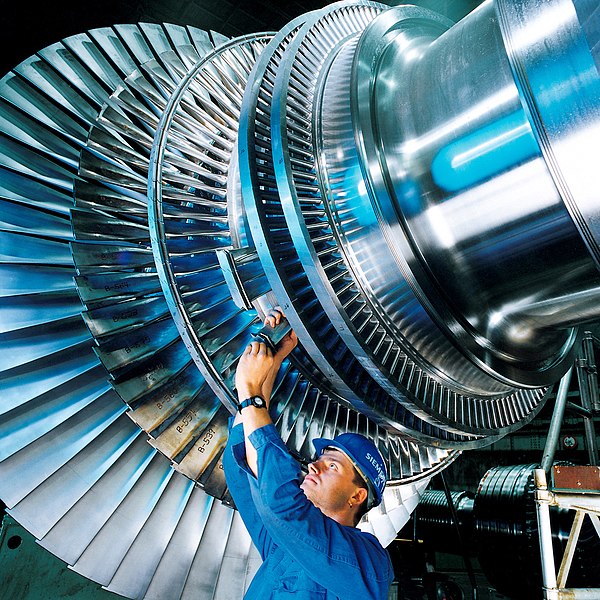A thermal power station is a type of power station in which heat energy is converted to electrical energy. In a steam-generating cycle heat is used to boil water in a large pressure vessel to produce high-pressure steam, which drives a steam turbine connected to an electrical generator. The low-pressure exhaust from the turbine enters a steam condenser where it is cooled to produce hot condensate which is recycled to the heating process to generate more high pressure steam. This is known as a Rankine cycle.
Nantong Power Station, a coal-fired power station in Nantong, China
Rooiwal Power Station in South Africa
Geothermal power station in Iceland
Drax Power Station, the world's largest biomass power station, in England
A steam turbine is a machine that extracts thermal energy from pressurized steam and uses it to do mechanical work on a rotating output shaft. Its modern manifestation was invented by Charles Parsons in 1884. Fabrication of a modern steam turbine involves advanced metalwork to form high-grade steel alloys into precision parts using technologies that first became available in the 20th century; continued advances in durability and efficiency of steam turbines remains central to the energy economics of the 21st century.
The rotor of a modern steam turbine used in a power plant
A 250 kW industrial steam turbine from 1910 (right) directly linked to a generator (left)
The first steam turbine-powered ship Turbinia: fastest in the world at that time
A steam turbine without its top cover








